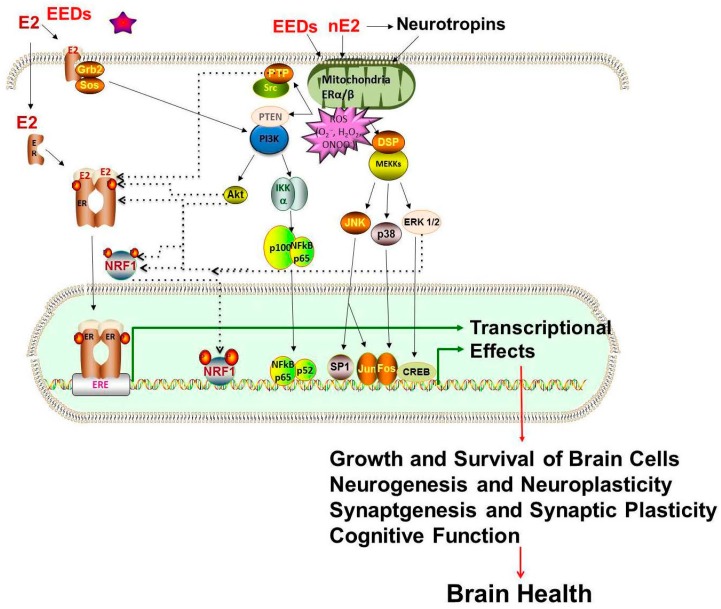Figure 2.
Possible mechanisms of estrogen or EED action. Genomic mechanism involves the nuclear form of estrogen receptors ER-α or ER-β which associates with either the estrogen response element (ERE) or Fos/Jun heterodimers that bind, in turn to activator protein-1 (AP-1) sites, whereas plasma membrane bound ER-mediated mechanisms include the activation of an ER linked to the phosphatidylinositol 3-kinase (PI3-K)/Akt, ERK1/2 mitogen-activated protein kinase (MAPK) pathways, protein kinase C (PKC), and cAMP/protein kinase A (PKA) converging with the genomic pathway. Actions of neurotrophins are influenced by estrogens or EEDs and vice versa. These pathways are also activated by reactive oxygen species (ROS). ROS mediated redox signaling leading to the activation of Akt/ERK/PKC pathways modulates nuclear transcription factors (e.g., ER, CREB, c-Fos/c-Jun, NRF1) binding to their DNA motifs in the regulatory regions in DNA sequences of genes associated with growth and survival of brain cells, neurogenesis and neuroplasticity, synaptogenesis and synaptic plasticity and cognitive function. Estrogenic effects mediated through these pathways are inhibited by antioxidants.

